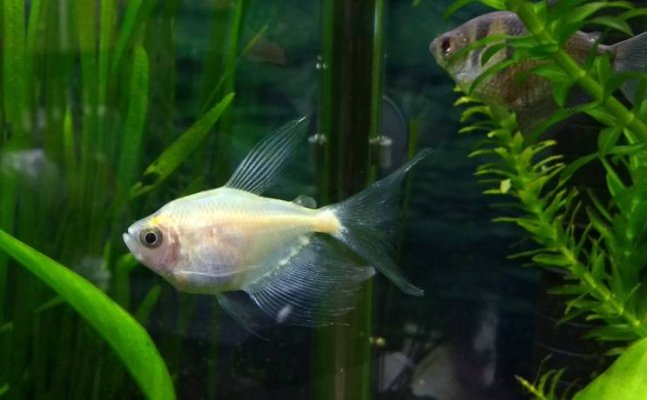UntimelyLord
Aquarium Advice Freak
- Joined
- Jan 12, 2017
- Messages
- 235
About a year ago I had lymphocystis come up in my school of skirt tetras because their "head honcho" tetra died and they were stressing figuring out who should be the new boss. With time and a few extra water changes the lymphocystis went away, and I figured I was done with it as long as fish were not stressed. Now it seems to be coming back, and there are no stressors as far as I can tell. Ammonia and nitrite are zero, nitrate is 20-30. Tank is low tech planted 30 gallon with 9 skirt tetras, a dwarf gourami, and amano shrimp. Temp is 77°F, pH is 7.8 as it has always been. Filter is Fluval HOB with 350+ gph. The white skirt tetras seem to be the only ones affected, and I've read that they can have a weakened immune system compared to the wild-colored type. Is there anything I can do for them? I know lymphocystis is viral so there isn't really a treatment for it, but it seems weird that it has come back with no apparent changes or stressors. Ideas? Picture is of worst affected fish.

Last edited:

 However, proper identification is the major key to curing the problem.
However, proper identification is the major key to curing the problem.  There will come a time when you will have to decide if the cost of treatment/prevention is better than replacing the fish or system. That's a judgement call on your part. I have had customers spend a lot of money ( against my advice) on medications to save a $5.00 fish. Sometimes it works, sometimes it doesn't. So, as I said, it's a judgement call on your part.
There will come a time when you will have to decide if the cost of treatment/prevention is better than replacing the fish or system. That's a judgement call on your part. I have had customers spend a lot of money ( against my advice) on medications to save a $5.00 fish. Sometimes it works, sometimes it doesn't. So, as I said, it's a judgement call on your part.